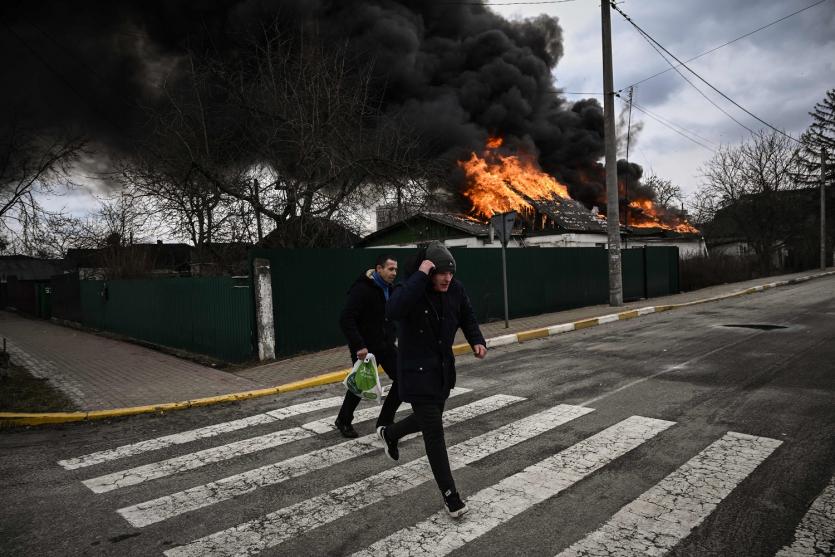People run for cover in front of a burning house during shelling in the city of Irpin, outside Kyiv, on March 4, 2022. Photo: AFP via Getty Images
By Patryk Krych | The World Daily | FEBRUARY 22nd 2022
For well over a month now, the world has been casting a concerned eye over the border between Ukraine and Russia, where mounting troops and building tensions have led many to the belief that the situation may lead to conflict – and thus to war. To some, this has also raised the question: what would be the environmental impacts of such a conflict?
Following the dramatic orders of Russian President Vladimir Putin on Monday, where he had his troops march into the Donetsk and Luhansk regions of Ukraine in a severe escalation of the already tense events, oil prices soared to a 7-year high.
Despite occupying only 6% of the territory of Europe, Ukraine is known to have outstanding forests and environments, accounting for about 35% of all of Europe’s biodiversity. Conflict in the country would not only harm this, but would also extend far past the borders, causing potential environmental destruction on a much wider and thus more devastating scale.
It’s been estimated that Russia stationed around 130,000 troops near Ukraine’s border this Winter. Much of these troops had marched on the Donetsk People’s Republic (DPR) and Luhansk People’s Republic (LPR) after they had been recognised as independent states by Russia, particularly those held by rebel separatists.
“We remain open to diplomacy for diplomatic solution,” said the Russian ambassador to the United Nations, Vassily Nebenzia. “However, allowing bloodbath in Donbas is something we don’t intend to do. We are forced to note the negative role played by our western colleagues led by the US.”
UK Prime Minister Boris Johnson has made the promise that Russia will be facing a “barrage of sanctions”, whilst the defence secretary Ben Wallace stated that the areas of Donetsk and Luhansk had been “effectively annexed” from Ukraine, much like the Crimean Peninsula eight years back during what many point to as the beginning of the conflict.
As for the possible environmental impacts from such a conflict, aside from the potential loss of much of the country’s biodiversity (and that of the countries around it) there is the risk of a mass increase in CO2 emissions. Conflicts inevitable lead to the consumption of vast amounts of fuel, which in turn could only worsen the current climate crisis. Land and air vehicles, especially those designed for conflict, are by no means environmentally friendly.






